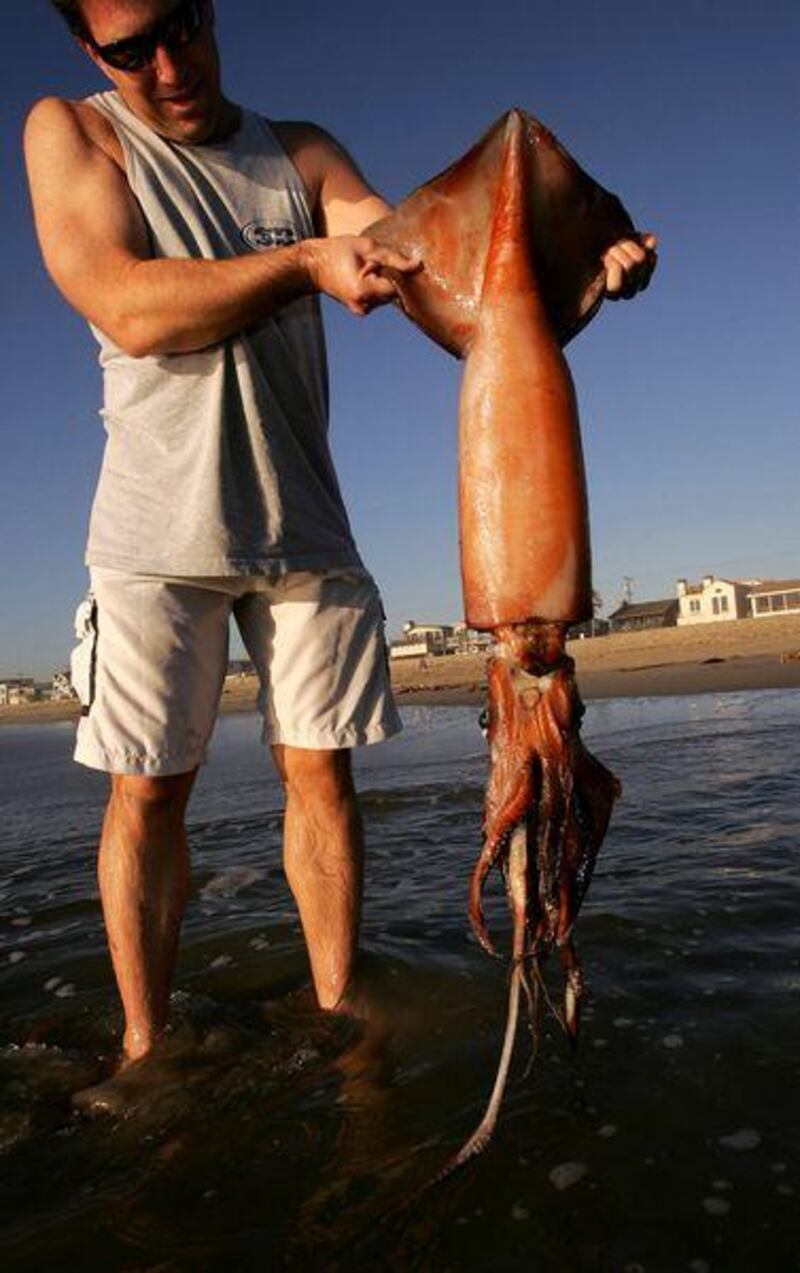Don't go in the water. The tagline from the movie Jaws summed up the hysteria that followed the film's release and the deep phobia that so many people still feel about the underwater world. But that was just a movie. As you read this, thousands of giant sea monsters have invaded the warm waters off San Diego, California, and even begun attacking scuba divers. The Humboldt squid boasts a razor-sharp beak and toothed tentacles capable of slashing and tearing their prey. Also known as the jumbo flying squid or diablo rojo (Red Devil) they're no minnows. They can grow to around two metres in length and weigh up to 45 kilograms. In their native waters off the Mexican coast, they are usually found at depths of 200-700 metres, but will make a trip to the surface when hungry.
The eight-legged beasts might not muster a human kill count to compare with Steven Spielberg's infamous great white shark, but they're a menacing adversary nonetheless. Scuba divers have been reporting an alarming set of close encounters with the carnivorous cephalopods. One diver, Shanda Magill, even had her buoyancy aid ripped from her chest by a malicious tentacle. Perhaps it's a coincidence, then, that the new book Sense and Sensibility and Sea Monsters was announced last week. It's the latest literary mash-up from Quirk Books, the publishing company that brought us one of this year's surprise hits, Pride and Prejudice and Zombies. The new book will splice Jane Austen's original text with all-new tentacled mayhem, provided by the US author Ben H Winters.
"Can the Dashwood sisters triumph over meddlesome matriarchs and unscrupulous rogues to find true love? Or will they fall prey to the tentacles that are forever snapping at their heels?" says the promotional literature. "It's survival of the fittest - and only the swiftest swimmers will find true love!" Sounds like a classic, right? The publishers think so too, which is why the book is going head to head with Dan Brown's new novel, The Lost Symbol, which hits shelves in the UK and the US on the same day: Sept 15.
But banking on gargantuan sea monsters to keep audiences enthralled is nothing new. The Norse folk monster The Kraken has made numerous appearances in fictional works and popular culture over hundreds of years. The mythical beast, which is said to enjoy dragging entire ships full of sailors under the water, may have originated from sightings of real 15-metre-long giant squid in the North Atlantic.
With his poem The Kraken, Alfred Tennyson introduced the creature to the English-speaking world. His description is thought to have influenced Jules Verne's lair of giant squid in the classic science fiction novel Twenty Thousand Leagues Under the Sea. And of course, the most celebrated of all sea-fearing adventures, Herman Melville's novel Moby-Dick, wasn't complete without its own sideline in giant squid watching.
As if there aren't enough salty stories doing the rounds (real or fictional), Hollywood has also been getting in on the act. This May, the disaster movie Mega Shark vs Giant Octopus was released straight to DVD and gained overnight cult status. The film's theatrical trailer, released earlier this year, notched up over a million plays on MTV.com and even more on YouTube. In the film, San Francisco is besieged by oversized sea life, apparently large enough to gnash at the Golden Gate Bridge, crush submarines and even swat passenger planes out of the skies. The ultra-low-budget flick even stars the Eighties pop sensation Debbie Gibson as a heroic oceanographer. If you haven't checked out the trailer, we recommend Googling it now - it's probably better than the film.
Now that we find ourselves facing homicidal calamari, perhaps we should ask the question: is life imitating art or art imitating life? Beats us. It must be something in the water.





